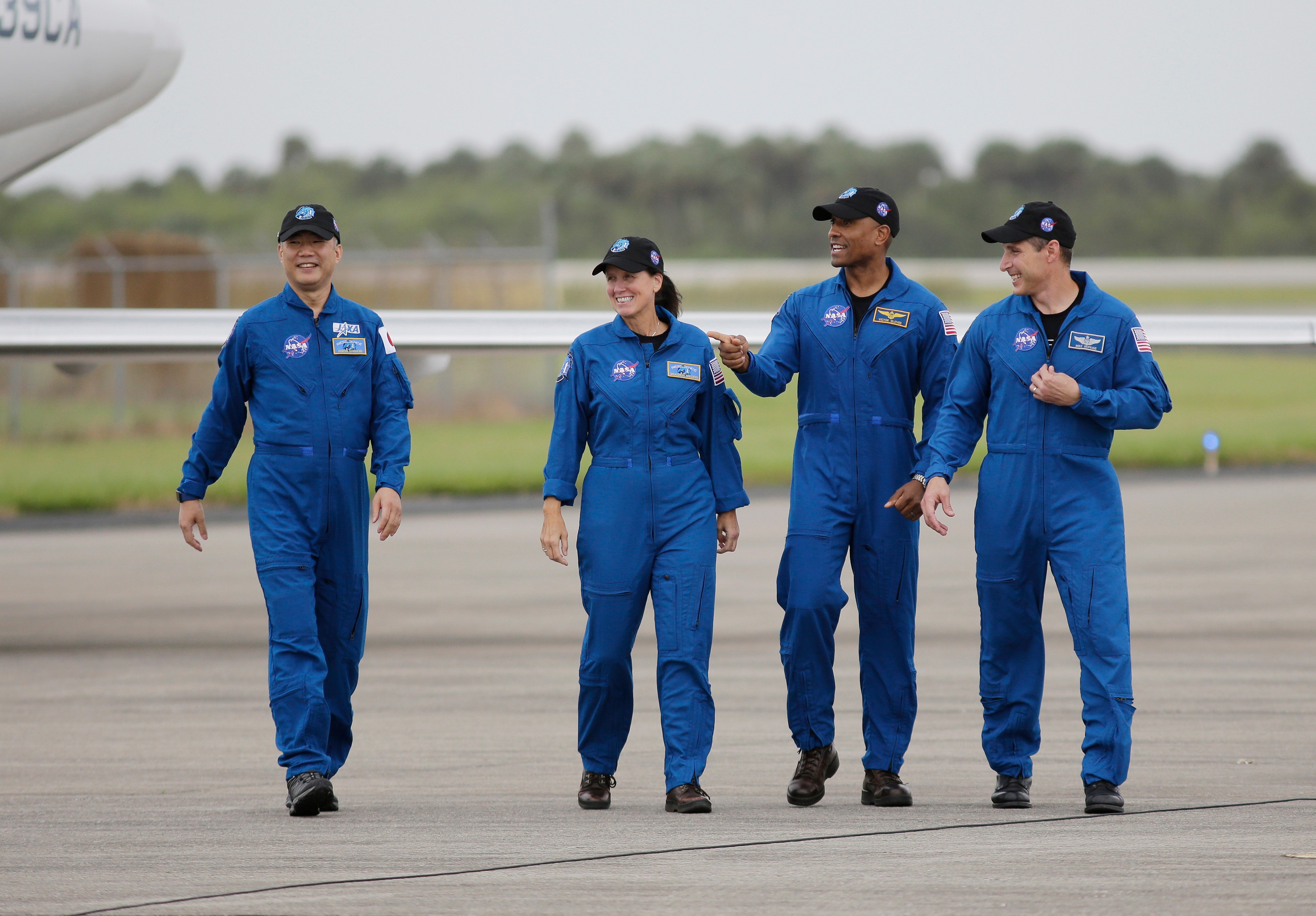NASA agency SpaceX’s first Crew Dragon operational mission is scheduled to launch on Saturday.
The mission will bring NASA astronauts Mike Hopkins, Victor Glover, Shannon Walker, and Japan Aerospace Exploration Agency astronaut Soichi Noguchi to the International Space Station aboard the Crew Dragon. It comes after the successful Demo-2 mission earlier this year.
“The flight readiness review has officially ended today, and we’re going to #LaunchAmerica on November 14,” NASA wrote on Twitter on Tuesday.
“NASA And the Embed a Tweet I completed a certificate #Crowdragon! “I am very proud to say that we will re-launch regular human space flights to American soil on a US rocket and spacecraft,” NASA Administrator Jim Bridenstein tweeted on Tuesday.
Astronas is heading to launch the site for the SpaceX trip
Crew-1 is slated to launch aboard a SpaceX Falcon 9 rocket at 7:49 PM EST on Saturday from the Launch Complex 39A at NASA’s Kennedy Space Center in Florida. The Crew Dragon spacecraft is expected to dock at the International Space Station at 4:20 am on Sunday.
Japanese astronaut Soichi Noguchi from left, NASA astronauts Shannon Walker, Victor Glover and Michael Hopkins walk after their arrival at the Kennedy Space Center, Sunday, November 8, 2020, in Cape Canaveral, Florida. The four astronauts will fly aboard the SpaceX Crew-1 mission to the International Space Station scheduled to launch on November 14, 2020
(AP Photo / Terry Renna)
The launch date was previously scheduled for October 31, but was pushed back to November 14 when the Falcon rocket’s two engines were replaced due to contamination from the red paint used in the treatment.
The six-month mission is the maiden flight of a US commercial spacecraft.
Astronauts called the Dragon capsule resilience given all the challenges of 2020: coronavirus and social isolation, protests against racial injustice, election season and particularly tough campaigns. They’d been in quarantine for a week or two and took safety precautions – masks and social distancing – long before that.
In the Orbiting Space Laboratory, the Crew-1 team will join a NASA astronaut Kate Robins, Already on the space station, to conduct extensive scientific research. “Not only will Crew-1 astronauts and their Expedition 64 NASA colleagues conduct hundreds of microgravity studies during their mission, but they will also present new scientific instruments and experiments that have been carried into space with them inside the Crew Dragon,” NASA explained in NASA. statement.
The astronauts will investigate the physiology of food, conduct a student-designed experiment on genes in space and grow radishes, as well as examine the interaction between microbes and rocks in microgravity.
Other experiments include the use of thumb drive-sized devices that contain human cells to study the effects of space on human organs and a study of changes in cardiovascular cells and tissues in microgravity. Experiments will also be conducted on NASA’s next-generation spacesuit, the Exploration Unit for Extended Vehicle Navigation (xEMU).
The mission marks another important milestone for the US space program after the Demo-2 flight earlier this year.
On August 2 NASA Astronauts Doug Hurley and Bob Behnken Spray down In the Gulf of Mexico in the SpaceX Crew Dragon spacecraft, ending their historic two-month journey into space.
The mission was the first time that an astronaut had been Release From US soil since the last space shuttle flight in 2011. Amidst a blaze of publicity, the Demo-2 mission blasted off from the Kennedy Space Center aboard a SpaceX Falcon 9 rocket on May 30.
After the space shuttle program ended, the United States relied on Russian Soyuz rockets launched from the Baikonur Cosmodrome in Kazakhstan to deliver astronauts into space. Russia shipment The United States has about 75 million dollars to send an astronaut into space. The Associated Press reports that the latest Soyuz ticket cost America $ 90 million.
Click here for the FOX NEWS app
Chris Politician from Fox News, Christine Fisher, Lauren Blanchard and The Associated Press contributed to this article. Follow James Rogers on Twitter Embed a Tweet












































